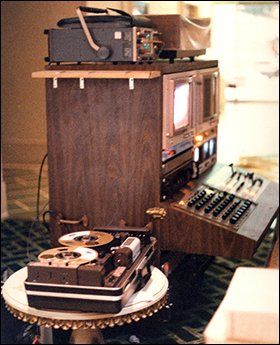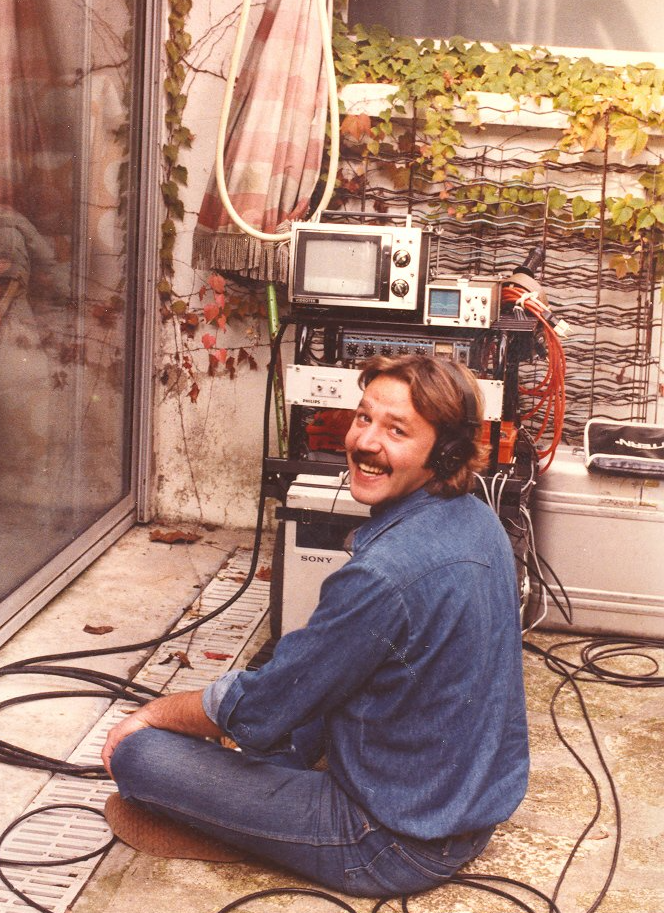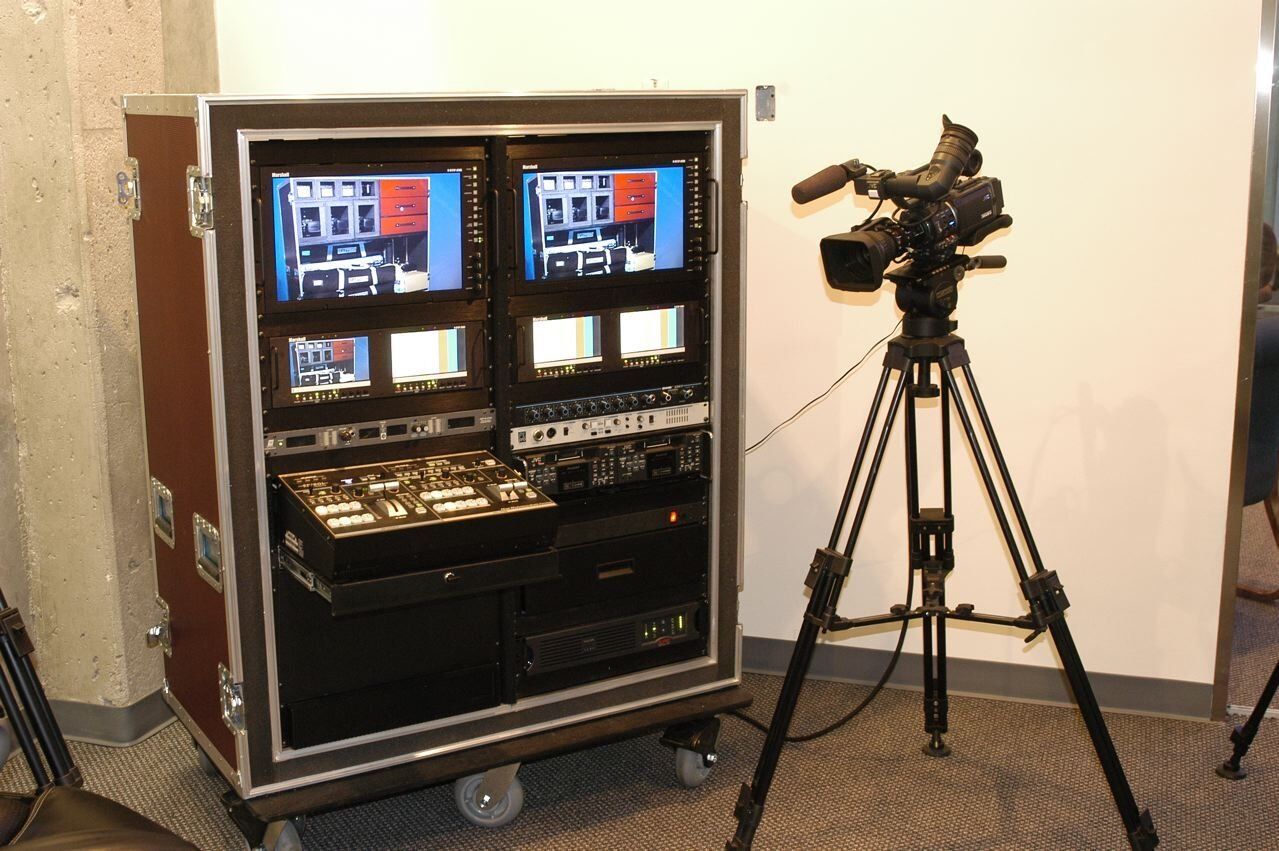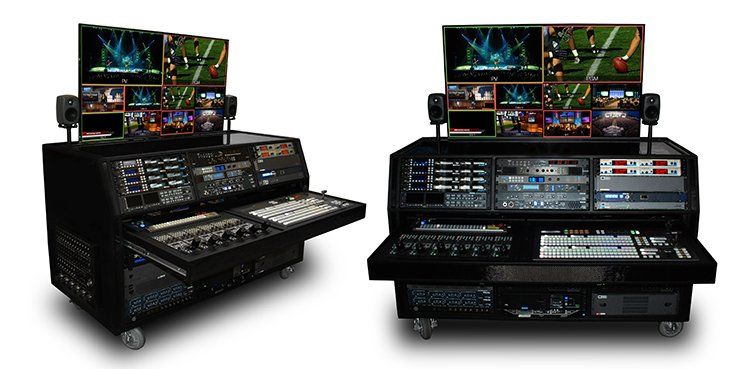Our History
A Walk Down Flypack History Lane
I built my first Flypack™ in 1978 in my garage.
Greg Thomas (now chief engineer of the Tennis Channel) had just come back from an assignment in Iran where he was trying (unsuccessfully) to teach Iranian pilots how use navigation equipment in the F16 jets that we had sold to the Shah. He was young and out of work. He did know electronics, but nothing about video.
I also was young and knew nothing about video. Well almost nothing. I did buy one of the first Sony reel-to-reel video recorders and one of the first hand-held cameras.
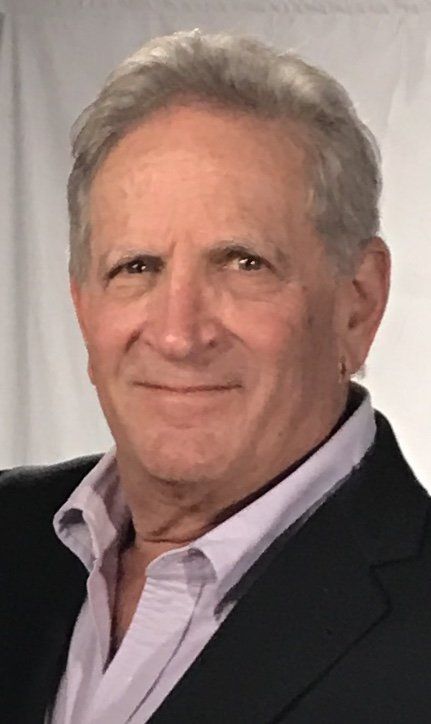
Andrew Maisner President and Founder of TV Pro Gear
Up till this time, cameras weighed over 300 pounds and video recorders weighed over 600 pounds. Location video shooting was non-existent. In fact, in those days, the news was shot on 16mm film. Then the negative was rushed back to the TV station where it was developed. Live coverage of a news event was not possible yet.
Our friend, Stanly Scheff would dress up in a tuxedo and go out in the street shooting random interviews with people. Mostly they were “video spoofs”. Afterwards, we would then invite dozens of people to my house where we would all watch these “first ever” gorilla videos.
In 1978 there was no Spanish language channel in Los Angeles (or anywhere else in the USA). However, three Mexican Americans managed to buy three hours a day on Channel 18 to play Spanish programming. At that time, the founder of the Transcendental Meditation movement, Maharishi Mahesh Yogi owned Channel 18.
For two hours a day, they played back old movies dubbed into Spanish. However, for one hour per day, they had to provide new programs. Somehow, they found me and asked me if I could shoot a live one-hour show. Their budget was $400. Even though I did not speak Spanish, I of course said, “no problem”. They told me I was to go to “El Club de Virginia” in East LA and shoot the “disco salsa dancers”. We had a week before our first shoot.
Greg and I tore out the stove, oven, sink and bed from my bubble top Chevy camper van. We built the first ever “Flypack” in my back yard. I sawed the wood and glued a sheet of Formica to it. It only looked “half-bad”. Somehow, we managed to get our hands on two more cameras and a switcher. We could not afford monitors so we used our personal TV sets. For audio, we went to Radio Shack and bought a $30 “Hi-Ball” microphone.
I had no crew. However, I had recently graduated from UCLA. So I called some of my fraternity brothers and told them I would pay them $30 per night plus all the free beer they could drink (compliments of the club) if they would be cameramen. They, of course, had no experience. However I reassured them it didn’t matter because nobody would see this show anyway (or so I thought).
For audio, we put the microphone on a stand in front of the Jukebox that was used to play the music. We hand made a sign on poster board that said “Disco Salsa Explosion”. We propped it up in front of the Jukebox. I faded in on the sign and then dissolved to our DJ as he said “Yo Soy Victor Mendez con Disco Salsa Explosion”. I then dissolved to the dancers as they started to dance. After a few songs were over, he would walk over the jukebox, grab the microphone and say, “Yo soy Victor Mendez con Disco Salsa Explosion y aqui es un commercial”. When I heard “Aqui es un commercial” I knew I had to fade to black.
As bad as we were, they thought it was good, given that they had nothing to compare it with. So they said shoot the disco show every Thursday night and on Monday night go to El Club de Mimi (also in an East LA). Wow! I was making $800 a week and had two shows on TV. The fact that I was directing Spanish TV shows without speaking Spanish somehow didn’t stop us.
During the day, we would travel up and down Whittier Boulevard in East LA with the client as they went from used car dealer to used car dealer and from furniture store to furniture store selling them advertising on the shows. We would just drive in behind them and make a commercial in 30 minutes and then be on our way to the next dealer or whatever.
Eventually, they had us doing five shows per week. We were getting experience that you just couldn’t buy. After about six months my crew and I were pretty darn good, although, our equipment stunk. However, I was able to get friends to loan me money and we were able to finally build a high quality truck. The rest was history.
In reality, ignorance was my ally. Had I realized how little I knew,
I wouldn't have attempted to do what I did.
By 1981 we were using state-of-the-art Philips cameras. Of course, there was no such thing as a camera with a recorder built into it.
In 1983 I told my Chief Engineer, Greg Thomas, (who had a double degree in Physics and Electrical Engineering) that I thought someday there would be a video camera with the recorder built in. He then launched into a long speech on how that could never happen due to the amount of data and the read/write velocity of a moving tape head and some other reasons that I did not understand. The next year, Sony put on sale the first Betacam one-piece camera recorder. It heralded the end of news being shot on film.
The moral of the story is: “nobody knows anything, especially the experts”.
In 1997, I founded TV Pro Gear. At the time, we were building a lot of Avid editing systems. We also built a 24’ hi cube truck for Shepherd of the Hills Church.
In 2004 we were contacted by Mosaic Church. They put on three services in different locations every Sunday. They needed a portable system that could be moved from location to location. The result is the 3-camera Flypack™. It was very reliable and made a great picture considering the technology available at the time. It used Hitachi CCD cameras.
Notice, this was built before the invention of multi-viewers for monitoring. In 2004 you would have to have eight individual monitors. One each for the cameras and two larger monitors for program and preview outputs. You also needed monitors to see the output of the recorders
In 2005, we were asked to build a Flypack™ for Allstar Video Productions. They had a contract to shoot rodeo matches in forty different cities over a two-month period. It was to be transported to the locations on a Mercedes Sprinter. It also featured Hitachi Cameras. After forty shoots in dirty dusty locations, the Allstar's owner brought the system back to us for a “tune up”. I am happy to report that other than blowing out layers of dust, not one item in the Flypak™ needed repair.
However, I was concerned that the Flypack™ cases were showing signs of wear. Specifically, the inner wooden frame that the rack rails were attached to were getting out of alignment and starting to sag. Also, the foam was starting to compress. Overtime, I felt this would reduce the effectiveness of the shock mounting.
I decided I could revolutionize the way Flypacks were built by using a jig-welded steel inner-frame attached to the outer shipping case wood via a series of rubber biscuits of the right density to absorb shocks. Because it was jig-welded, the rack rail alignment was precise.
By 2006, the first multi-viewers became available. This was a huge advance. Having to use eight monitors added lots of weight and required a huge amount of power. Switching to a multiviewer with a 50” Plasma display not only saved weight and power but it made the system more reliable and reduced costs significantly. We wanted to have the Plasma display retract into the Flypack case for shipping. We eventually found a manufacturer of marine monitor lifts. Designed for ships that were constantly swaying. They had the necessary robustness to stand up to the abuse our Flypaks™ get in shipping.
The new Flypack design worked beyond our expectations. We filed for patents immediately.
Since 2006 we’ve designed and manufactured dozens of Flypaks™.Every Flypak™ we build is slightly better than the last one. We are constantly finding things to improve and ways to refine the design. In a Flypak™, we are limited by the amount of space for equipment. As the components get smaller, the space saved enables us to add new equipment such as optical fiber base stations, instant replay, bigger switchers and more powerfull graphics generators.
In 2015, we started an initiative to create smaller, lighter more affordable Flypaks™. The results of those efforts can be seen in the new two-rack wide systems and the one-rack wide systems.
Our newest design is the Generation-5 Carbon Fiber Flypak™. It does away with the in/outer box design. Now, the suspension is handled by spring-loaded wheels (our own design-patent applied). This change enables the Flypak™ to hold 15% more equipment while at the same time having a smaller outer dimension. In addition, Gen-5 Flypaks™ have better ergonomics and a 35% larger input/output access panel. The removable carbon fiber panels reduce the weight, are more impact resistant and “look cool”.
At TV Pro Gear, we are dedicated to making every Flypack better than the last one.
©TV Pro Gear 2022. All Rights Reserved. Privacy Policy


